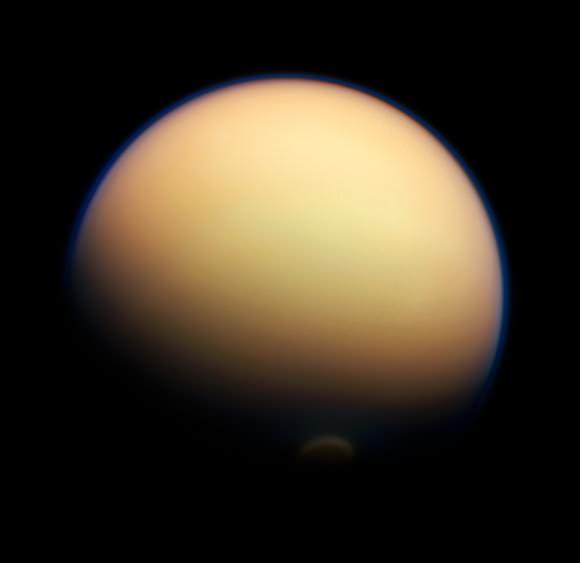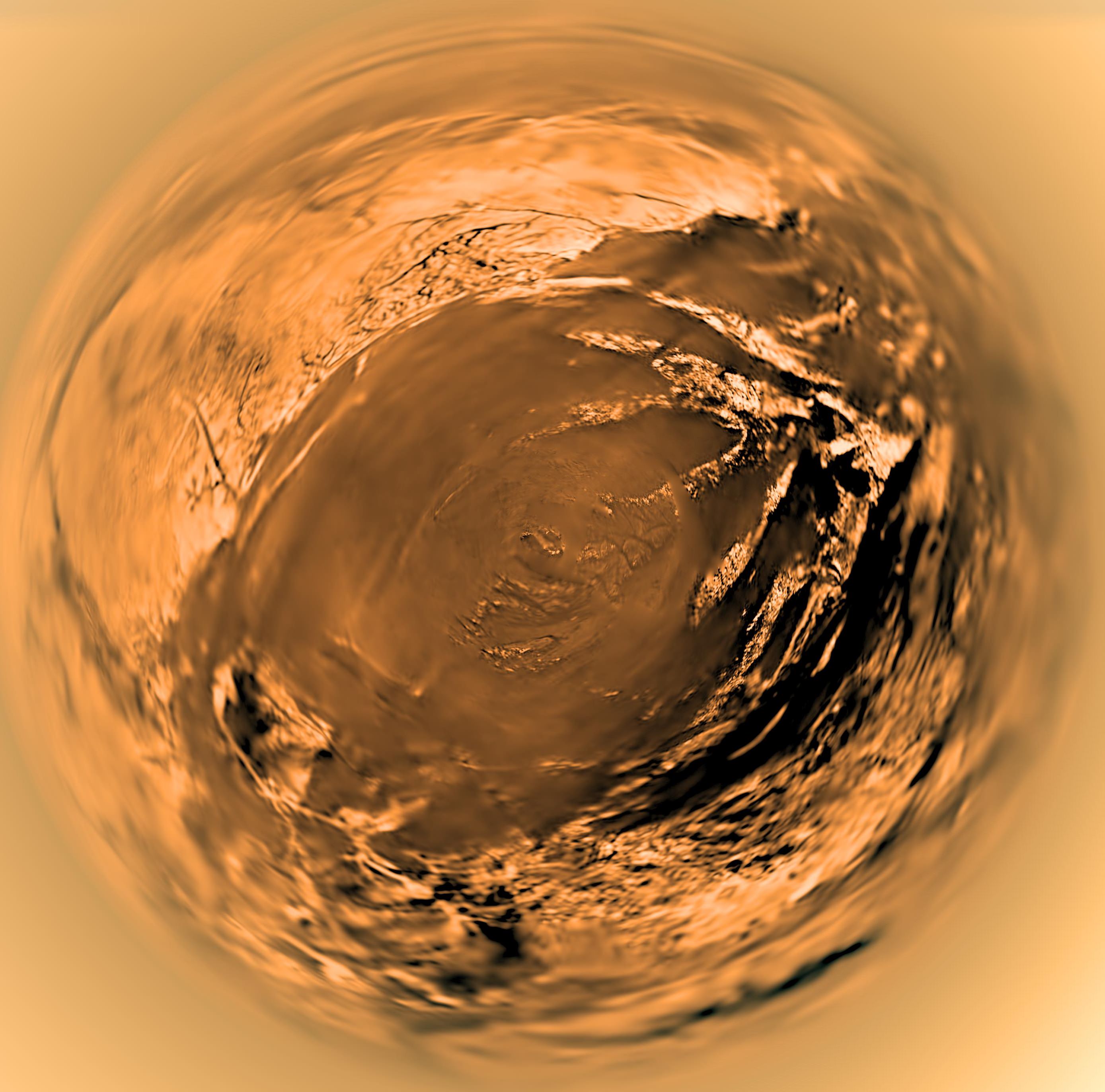What’s in all that browny orangey stuff in the atmosphere around Titan? It’s a question that scientists have been trying to answer concerning Saturn’s moon for decades (Carl Sagan was among them). That’s because it’s hard to reverse-engineer the recipe.
There are hundreds of thousands of hydrocarbons (hydrogen and carbon molecules) that could form the compounds in the atmosphere along with nitriles (nitrogen-abundant chemicals). But scientists are hoping that their new recipe gets a bit closer to understanding how the atmosphere works.
The researchers put gases inside of a chamber and monitored their reactions, starting with nitrogen and methane — the gases that are the most common in Titan’s atmosphere. Then they included benzene — which the Cassini spacecraft has detected in the atmosphere — along with close chemical relatives.

In the end, it seemed the best third ingredient was choosing an “aromatic”, a sort of hydrocarbon, that includes nitrogen. That’s because the scientists saw that the spectrum of this gas appeared to be similar to what was spotted by Cassini.
“This is the closest anyone has come, to our knowledge, to recreating with lab experiments this particular feature seen in the Cassini data,” stated lead author Joshua Sebree, a former postdoctoral fellow at the NASA Goddard Space Flight Center who is now an assistant professor at the University of Northern Iowa in Cedar Falls.
Scientists say the recipe still needs some modifications, but this is a good start. The research is available in the journal Icarus.
Source: Jet Propulsion Laboratory


The article describes an “aromatic” as “a sort of hydrocarbon, that includes nitrogen…”
Unless I’m mistaken, isn’t the sine qua non of “aromatic” a 6-membered carbon ring? Might you be thinking of alkaloids, where nitrogen is in fact reqired?
Ah, it seems that the sentence structure tripped me up. If one misses the second comma (as I did), it’s incorrectly defining ‘aromatic’ rather than saying “an aromatic (a type of hydrocarbon) that in this instance also contains nitrogen. Technically correct, but perhaps confusing.
[[In the end, it seemed the best third ingredient was choosing an “aromatic”, a sort of hydrocarbon, that includes nitrogen.]]
Looking at the abstract of the linked paper, perhaps it would’ve been clearer to merely list pyridine, quinoline and isoquinoline?